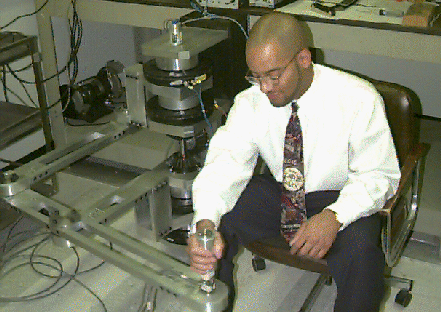
 Hurley Davis
Hurley Davis
The "robot" in question here is a planar, two-degree of freedom manipulator. The configuration is that of a four-linkage, closed parallelogram. The goal is to achieve position control using "passive" devices rather than active devices.
In general, control devices are active; that is they can provide energy to the system. In a control system, the controller uses current system information (or state information), long with a desired state condition, to produce a corresponding control action to achieve the desired state condition. For example, the temperature control system for a room uses a furnace or an air conditioner to control the room temperature. If the room needs to be heated,the furnace can add heat(energy) to the room(system). A more fitting example is that of a robotic manipulator using motors to control its position. Given a position error, the motors can provide a force to move the manipulator through a distance, to the desired position, thereby doing mechanical work, or adding energy to the system.